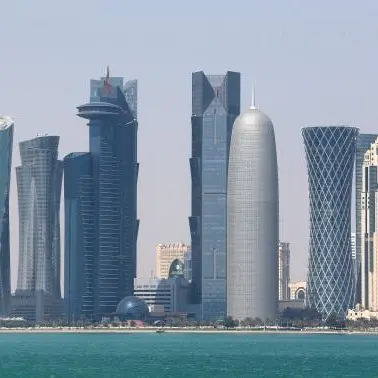26 July 2016
Muscat - Oman's abundant solar and wind-based renewable energy resources are unlikely to contribute in the short term to the nation's burgeoning electricity requirements, effectively cementing the role of natural gas as the sector's primary fuel resource.
According to Oman Power and Water Procurement Company (OPWP), the sole procurer of new power and water capacity, plans for new electricity generation capacity do not envision any scope for commercial-scale solar-based power generation over the 2016-2022 timeframe.
However, wind-based renewable energy is expected to make a modest contribution when a small wind farm comes into operation in Dhofar Governorate over the next couple of years, the state-owned utility said, noting that efforts are ongoing to put in place guidelines designed to support the implementation of large-scale renewables schemes in the Sultanate.
"OPWP currently has no definitive plans to procure renewable energy (RE) projects for the Main Interconnected System (MIS) (which covers much of the northern half of the Sultanate)," the procurer said.
"However, the Government has recently issued an approval in concept for construction of such projects subject to satisfaction of technical and economic assessments. OPWP is working with the Authority for Electricity Regulation Oman (AER) in 2016 to specify the evaluation terms that will enable large-scale, grid-connected RE projects to participate in competitive tenders for generation supply," the company added in its newly released 7-Year Outlook Statement, covering the 2016-2022 timeframe. Although there are no immediate plans for commercial scale renewable energy ventures within the main grid, the potential for renewables in the energy mix is still prospective, it pointed out.
"OPWP expects solar energy projects, wind farms, and potentially other renewable energy (RE) projects are expected to complement gas-fired generation in the Sultanate in the near future. Although OPWP has no current commitments to RE project development in the Main Interconnected System (MIS), a methodology is under development with the Authority for Electricity Regulation Oman (AER) that would allow RE projects to compete with conventional generation projects at economic prices," it explained.
The only renewable energy scheme that has made significant headway in its development is a 50 megawatt (MW) wind farm being developed by the Rural Areas Electricity Company (RAECO), a subsidiary of the wholly government owned Nama Group. Abu Dhabi-based Masdar is collaborating with RAECO in the execution of the landmark project. Output from the wind farm is proposed to be supplied to OPWP under a long-term Power Purchase Agreement.
Meanwhile, gas consumption by the power and water desalination sector is projected to grow at the rate of about four per cent annually over the next seven years in the MIS. However, continuing improvements in the efficiency of power supply have helped reduce the rate of growth in fuel consumption, according to OPWP.
"Since 2005, through the introduction of progressively more efficient generation plants, the average fuel consumption per unit of electricity production in the MIS has dropped from 374 standard cubic metres per megawatt-hour (Sm3/MWh) to 260 Sm3/MWh in 2015, an improvement of 30 per cent.
Over the next seven years, OPWP expects that an increasing share of power generation will be provided by the most efficient plants, contributing to a further 25 per cent improvement in MIS gas utilisation by 2022. Another significant contributor is the shift from multi-stage flash (MSF) to reverse osmosis (RO) technology for water desalination. This is expected to allow some of the combined power and water plants to be operated less intensively in favor of the newer and more efficient power-only Independent Power Projects (IPPs)," it added.
Muscat - Oman's abundant solar and wind-based renewable energy resources are unlikely to contribute in the short term to the nation's burgeoning electricity requirements, effectively cementing the role of natural gas as the sector's primary fuel resource.
According to Oman Power and Water Procurement Company (OPWP), the sole procurer of new power and water capacity, plans for new electricity generation capacity do not envision any scope for commercial-scale solar-based power generation over the 2016-2022 timeframe.
However, wind-based renewable energy is expected to make a modest contribution when a small wind farm comes into operation in Dhofar Governorate over the next couple of years, the state-owned utility said, noting that efforts are ongoing to put in place guidelines designed to support the implementation of large-scale renewables schemes in the Sultanate.
"OPWP currently has no definitive plans to procure renewable energy (RE) projects for the Main Interconnected System (MIS) (which covers much of the northern half of the Sultanate)," the procurer said.
"However, the Government has recently issued an approval in concept for construction of such projects subject to satisfaction of technical and economic assessments. OPWP is working with the Authority for Electricity Regulation Oman (AER) in 2016 to specify the evaluation terms that will enable large-scale, grid-connected RE projects to participate in competitive tenders for generation supply," the company added in its newly released 7-Year Outlook Statement, covering the 2016-2022 timeframe. Although there are no immediate plans for commercial scale renewable energy ventures within the main grid, the potential for renewables in the energy mix is still prospective, it pointed out.
"OPWP expects solar energy projects, wind farms, and potentially other renewable energy (RE) projects are expected to complement gas-fired generation in the Sultanate in the near future. Although OPWP has no current commitments to RE project development in the Main Interconnected System (MIS), a methodology is under development with the Authority for Electricity Regulation Oman (AER) that would allow RE projects to compete with conventional generation projects at economic prices," it explained.
The only renewable energy scheme that has made significant headway in its development is a 50 megawatt (MW) wind farm being developed by the Rural Areas Electricity Company (RAECO), a subsidiary of the wholly government owned Nama Group. Abu Dhabi-based Masdar is collaborating with RAECO in the execution of the landmark project. Output from the wind farm is proposed to be supplied to OPWP under a long-term Power Purchase Agreement.
Meanwhile, gas consumption by the power and water desalination sector is projected to grow at the rate of about four per cent annually over the next seven years in the MIS. However, continuing improvements in the efficiency of power supply have helped reduce the rate of growth in fuel consumption, according to OPWP.
"Since 2005, through the introduction of progressively more efficient generation plants, the average fuel consumption per unit of electricity production in the MIS has dropped from 374 standard cubic metres per megawatt-hour (Sm3/MWh) to 260 Sm3/MWh in 2015, an improvement of 30 per cent.
Over the next seven years, OPWP expects that an increasing share of power generation will be provided by the most efficient plants, contributing to a further 25 per cent improvement in MIS gas utilisation by 2022. Another significant contributor is the shift from multi-stage flash (MSF) to reverse osmosis (RO) technology for water desalination. This is expected to allow some of the combined power and water plants to be operated less intensively in favor of the newer and more efficient power-only Independent Power Projects (IPPs)," it added.
© Oman Daily Observer 2016











